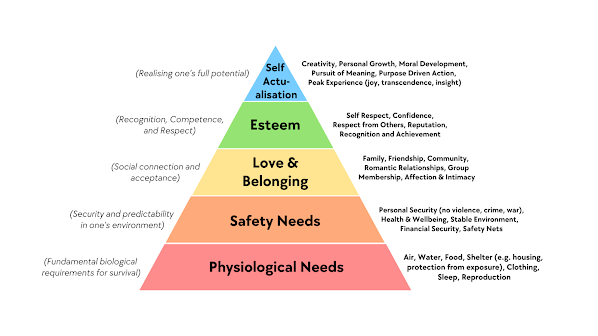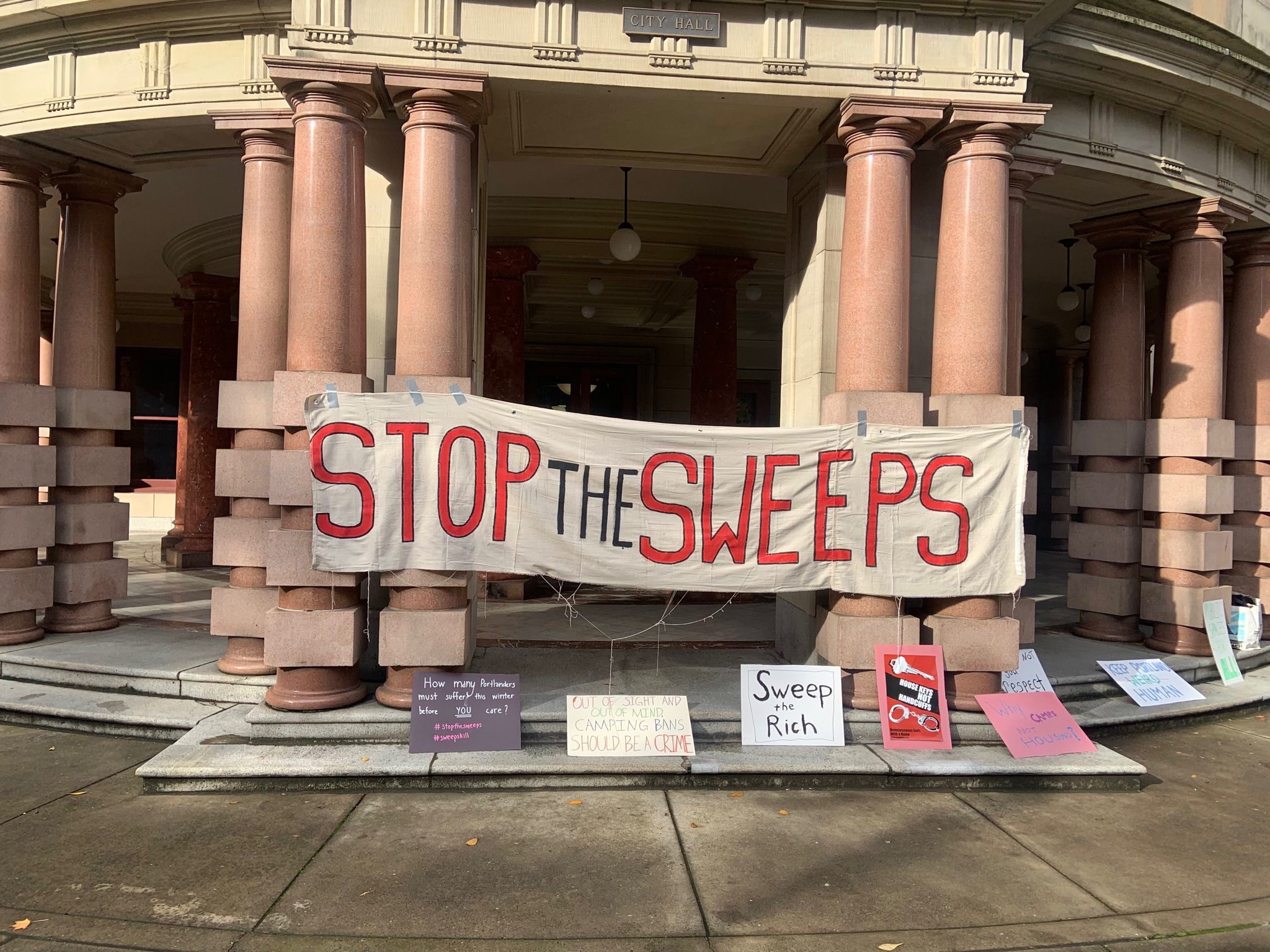Caleb Henry
Re-Framing The Issue
We can gain a new perspective on the issue of homelessness by turning our attention to the science of psychology. In the mid 20th century American psychologist, Abraham Maslow, published a theory of human motivation called the hierarchy of needs. This widely-accepted theory asserts that the most basic need of all is shelter. It comes as no surprise that an individual without access to reliable shelter will struggle with subsequent feelings of safety and belonging.
Every member of a community deserves to climb this metaphorical pyramid - and in order to do so they need their most fundamental needs met first. This serves as a basis for the ideology that food, water, and, most importantly, shelter are human rights and should be available to everyone.
Once these needs have been met, a person can begin to gain a sense of belonging which in turn helps them participate in their communities. Those who argue that we should not spend resources on people who cannot contribute tot he community often misunderstand this cause-and-effect relationship.
Stepping Up One Level At A Time
If science has found housing to be as basic a need as food or water, then housing should be considered just as important of a resource. Those without it should be helped in a similar manner to those who struggle with hunger or thirst. So what should we do? In order to promote recovery and integration, the following steps must be taken in order.Prioritize housing first: Stable housing provides a foundation to build up from - once they have it, people can begin to address the more complex needs like employment that will allow them to fully reintegrate.Expand access to healthcare: We must remove barriers to essential services that support safety and well-being. This includes mental health services and addiction services.
Build communities: Support programs that promote social connections and fight stigmas in order to help people rebuild their sense of belonging and self-worth.
Invest in employment opportunities: We must support pathways out of homelessness that will lead to fulfillment and offer resources to prevent slipping backward.
The Future Of Our Community
We all have a part to play in guiding the direction of our community. If we do nothing we will wither away. If we can make some change, however small, we will see results that encourage growth - and we will flourish. Everyone is impacted by these decisions whether they realize it or not. If you are interested in making a change, these organizations might interest you:
Portland Rescue Mission provides more than 67,000 nights of safe shelter annually.
Join PDX helps individuals and families find permanent housing solutions.
Transition Projects supports more than 10,000 annually in retaining aided housing.









